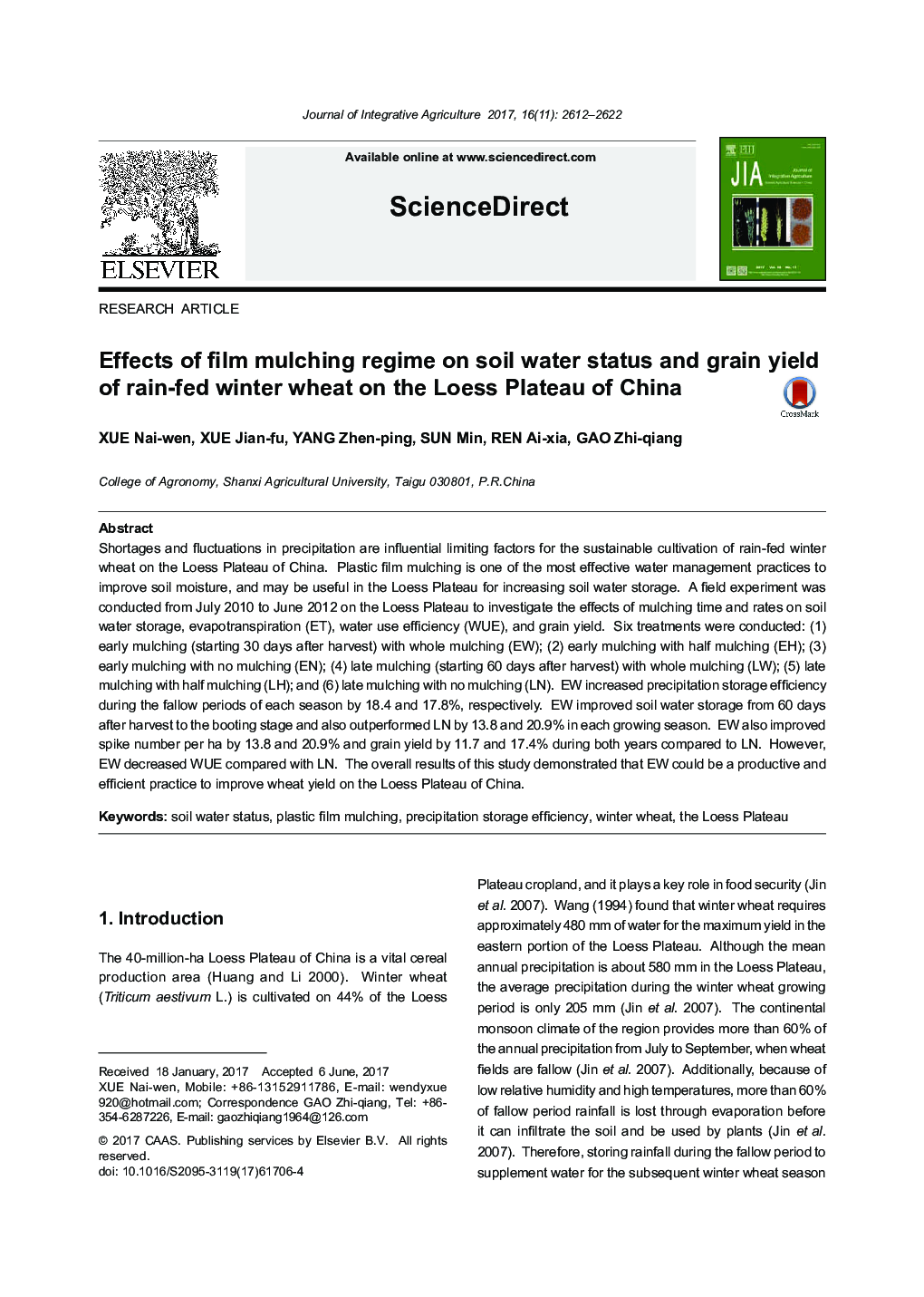| Article ID | Journal | Published Year | Pages | File Type |
|---|---|---|---|---|
| 8875820 | Journal of Integrative Agriculture | 2017 | 11 Pages |
Abstract
Shortages and fluctuations in precipitation are influential limiting factors for the sustainable cultivation of rain-fed winter wheat on the Loess Plateau of China. Plastic film mulching is one of the most effective water management practices to improve soil moisture, and may be useful in the Loess Plateau for increasing soil water storage. A field experiment was conducted from July 2010 to June 2012 on the Loess Plateau to investigate the effects of mulching time and rates on soil water storage, evapotranspiration (ET), water use efficiency (WUE), and grain yield. Six treatments were conducted: (1) early mulching (starting 30 days after harvest) with whole mulching (EW); (2) early mulching with half mulching (EH); (3) early mulching with no mulching (EN); (4) late mulching (starting 60 days after harvest) with whole mulching (LW); (5) late mulching with half mulching (LH); and (6) late mulching with no mulching (LN). EW increased precipitation storage efficiency during the fallow periods of each season by 18.4 and 17.8%, respectively. EW improved soil water storage from 60 days after harvest to the booting stage and also outperformed LN by 13.8 and 20.9% in each growing season. EW also improved spike number per ha by 13.8 and 20.9% and grain yield by 11.7 and 17.4% during both years compared to LN. However, EW decreased WUE compared with LN. The overall results of this study demonstrated that EW could be a productive and efficient practice to improve wheat yield on the Loess Plateau of China.
Related Topics
Life Sciences
Agricultural and Biological Sciences
Agricultural and Biological Sciences (General)
Authors
Nai-wen XUE, Jian-fu XUE, Zhen-ping YANG, Min SUN, Ai-xia REN, Zhi-qiang GAO,
